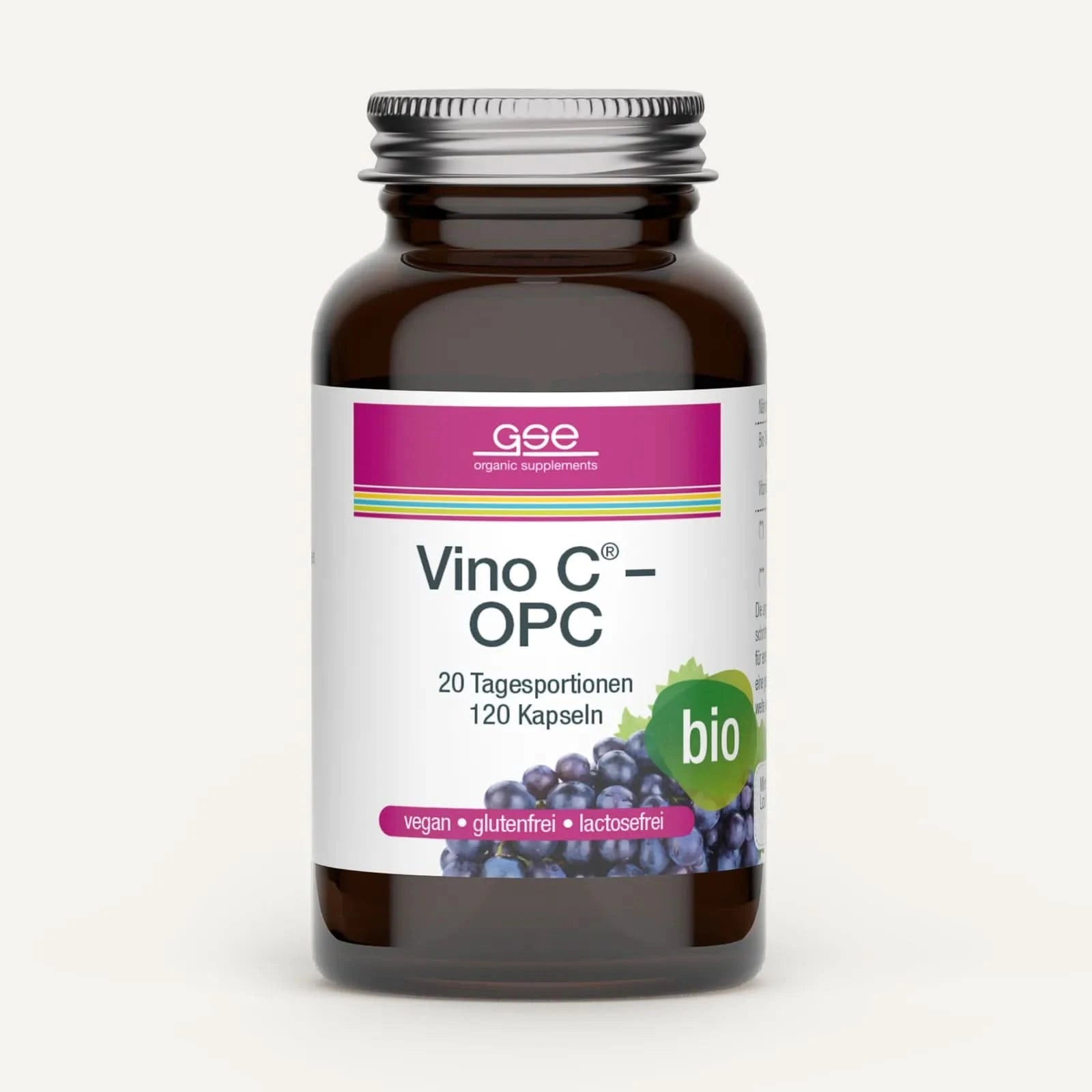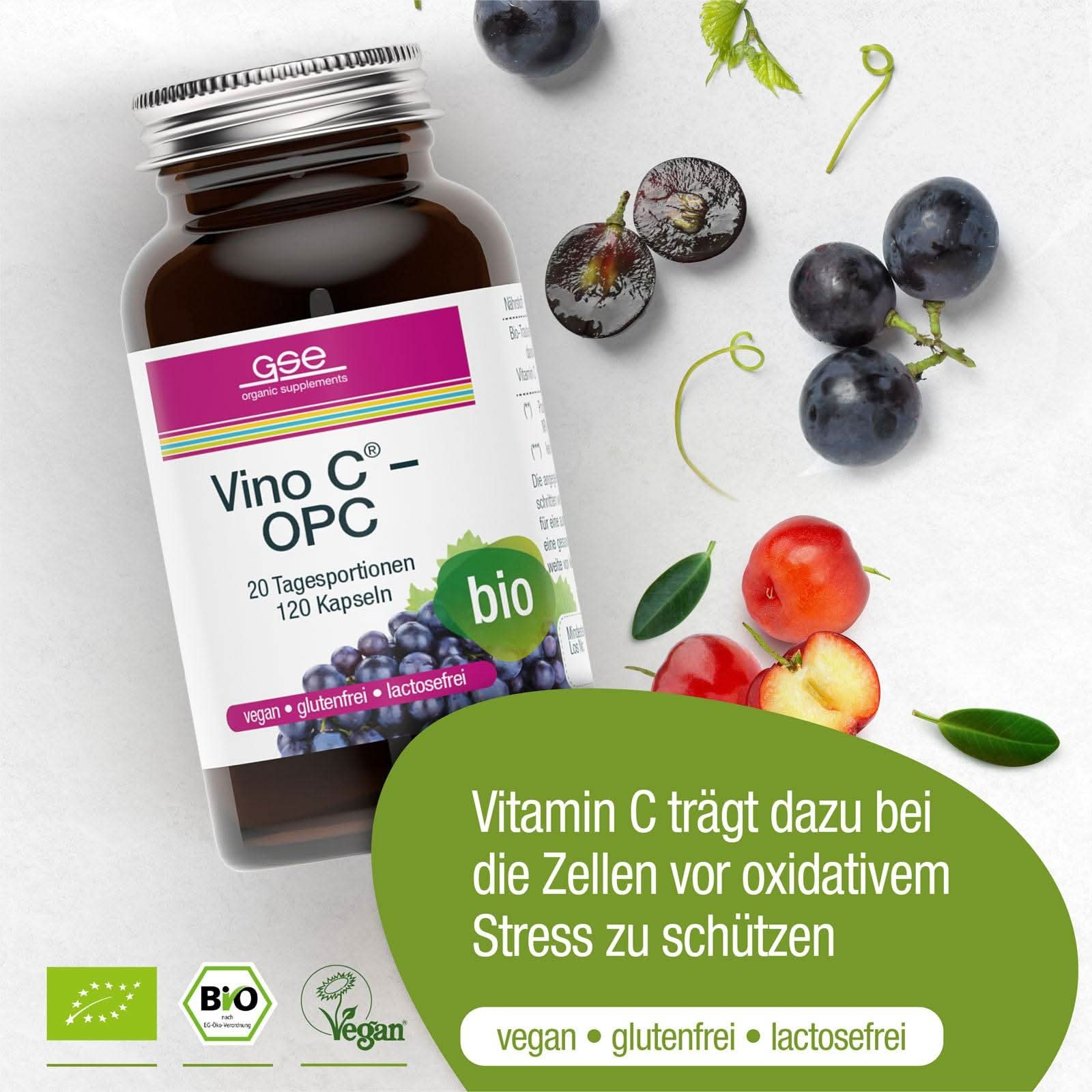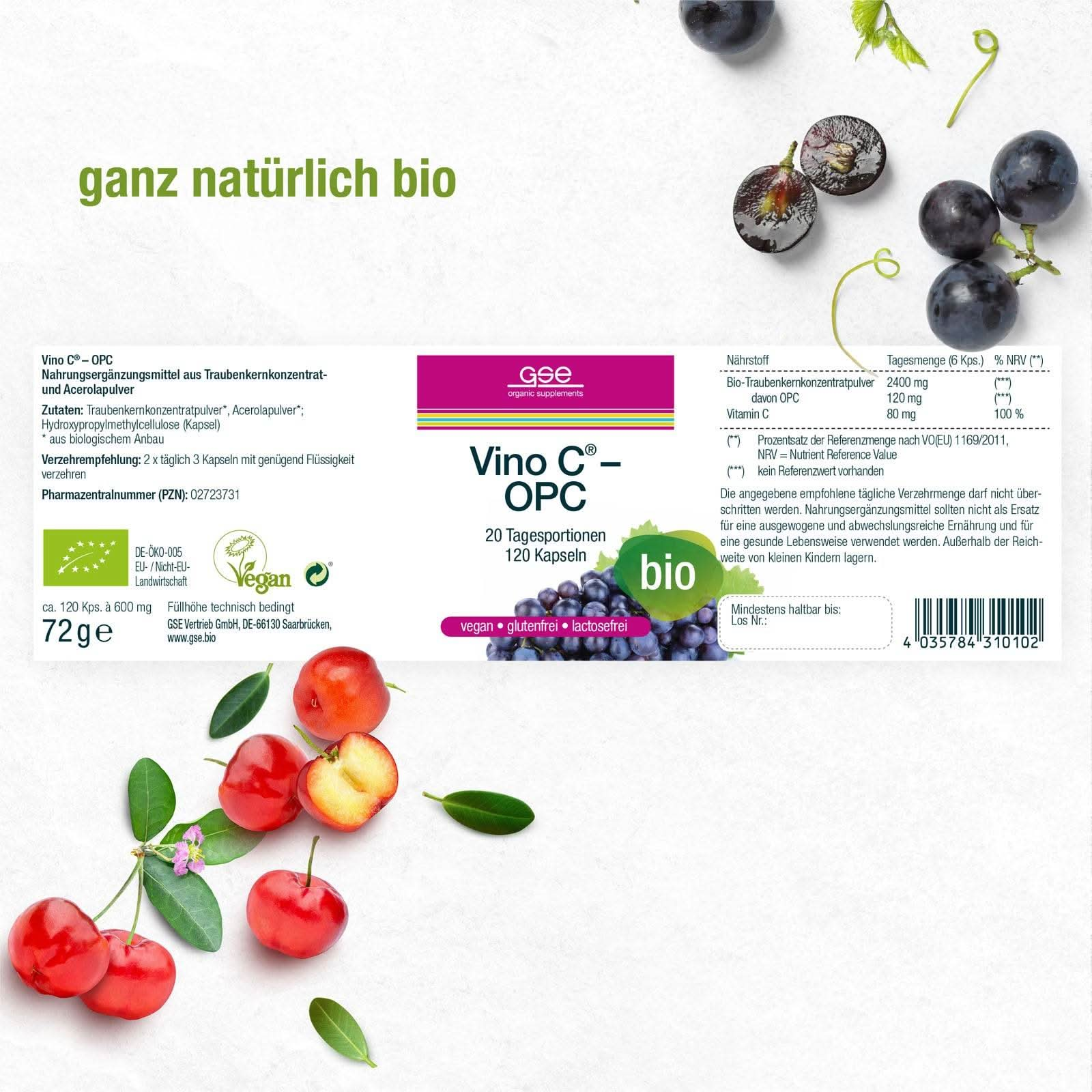Heute 10% Rabatt auf das gesamte Sortiment sichern*. Code: BLACKWEEK10
*ausgenommen bereits reduzierte Produkte
OPC:
Powerful antioxidant from grape seeds
OPC is the abbreviation for "oligomeric proanthocyanidins". These very stable molecular compounds from the flavonoid group were discovered in 1948 by the French scientist Jack Masquelier when he was researching whether peanut skins were suitable for feeding to animals. In the course of his experiments, he discovered that all OPC-containing tissues protect underlying plant parts from oxidation (e.g. rancidity) and oxidative stress caused by environmental factors such as UV radiation and pollutants. In addition, OPC strengthens the structural integrity of the plant and protects it from pests, for example. The antioxidant potential of OPC is many times greater than that of other antioxidant vitamins.
Unfortunately, the largest amounts of OPCs are found in parts of plants that rarely or never end up on our plates - grape and ginkgo leaves, the dry red skins inside peanuts and pine bark. Other good, but less popular sources are grape seeds and the cores of apples. Pomegranates, coconuts, blueberries and apple pulp also contain OPCs, albeit to a lesser extent. Prolonged storage and heating reduce the OPC content of foods.
These products from GSE contain OPC:












